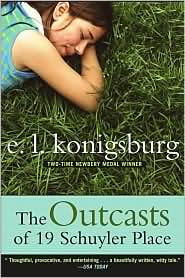 Summary
SummaryIn this installation of the Babymouse graphic novel series, we see Babymouse face one of her greatest fears: playing dodge ball. The book gives us context for Babymouse’s fear of dodge ball as we see her previous exploits in the game. We are also given a portrait of her ultra intimidating dodge ball competitor, a bully cat. Babymouse faces her fears with the help of her friend Wilson. In the end Babymouse not only plays dodge ball, but is the hero of the game.
ImpressionsBabymouse: Our Hero was the third graphic novel I’ve ever had the pleasure of reading. After training my eyes and brain on how to read graphic novels with the previous two that I read, I was prepared to fully enjoy this book. Babymouse is a character that I think a lot of young readers can identify with. Babymouse is admittedly far from perfect, her every flaw shows. She likes to sleep late, misses the bus, and forgets her gym shoes— the list goes on. I like that this character, flaws and all, is able to prevail with a bit of courage and help from her best friend. This book perfectly illustrates how to show kids that you don’t have to be perfect to do something right or to do something well. Beyond a well told story, the illustrations in this book are really fun and entertaining. Like a well illustrated traditional picture book, the panels in this graphic novel give us further insight into the story beyond what is offered by the text. The illustrator draws your eye to key points of the illustration by highlighting them in pink against an otherwise black and white picture. This is a fun book that offers a great story accompanied by exciting illustrations, its sure to appeal to many young readers.
Review: BooklistOur Hero, the first of two books in an energetic comics series created by a brother-sister team (Jennifer's
Our Only May Amelia was a Newbery Honor Book), introduces Babymouse, a young rodent possessed of an admirably gender-bending array of interests and plagued by typical school traumas. The main confrontation takes place on the harrowing battlefield known as the dodge-ball court, the site of an earlier trauma for Babymouse. At the end of a furious match, arrogant class idol Felicia Furrypaws (a cat, of course) gets a satisfying comeuppance and Babymouse faces her fears. In
Queen of the World, Babymouse, the wise-cracking rodent stand-in for your average, adventure-seeking nine-year-old, strives to capture Felicia's goodwill, finally achieving her end at the expense of Wilson Weasel, truest of friends. But, wouldn't you know it, Felicia's world has little to offer a smart, fun-loving mouse, after all.
The Holms spruce up some well-trod ground with breathless pacing and clever flights of Babymouse's imagination, and their manic, pink-toned illustrations of Babymouse and her cohorts vigorously reflect the internal life of any million-ideas-a-minute middle-school student
Suggested ActivitiesThis book would be a great cross curricular material for a gym class and language arts class. At times students are sick or injured and cannot fully participate in gym.
Having Babymouse: Our Hero on hand could be a great way to engage students in at least reading about dodge ball if they’re not able to participate in class.
BibliographyHolm, J.L. & M. (2005)
Babymouse: Our Hero. New York: Random House. ISBN: 0375832300.
Karp, J. (2005, December) [Review for the book
Babymouse: Our Hero by Jennifer L. Holm and Matthew Holm].
Booklist, 102(7), 48-48.



















